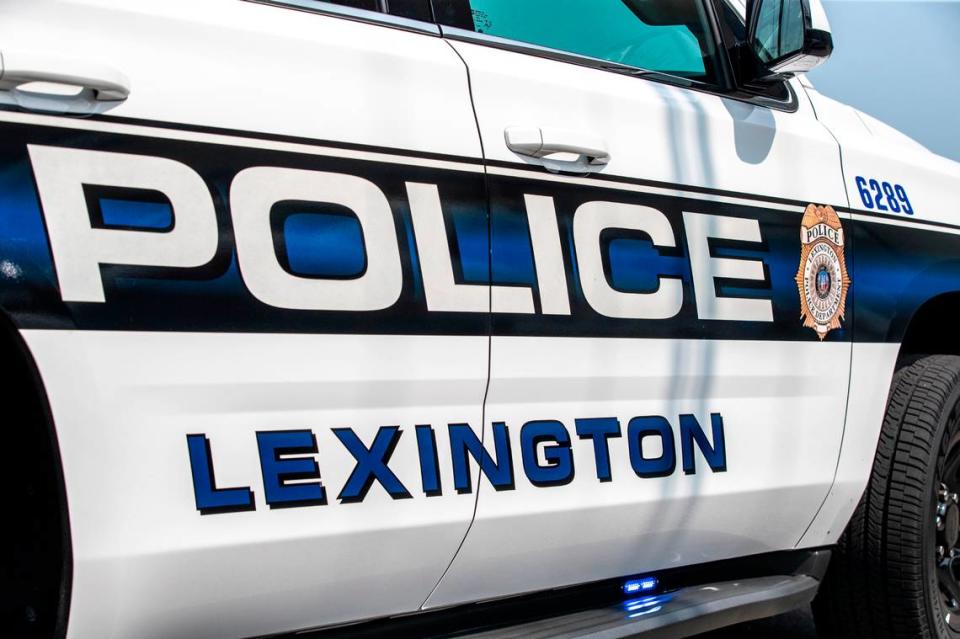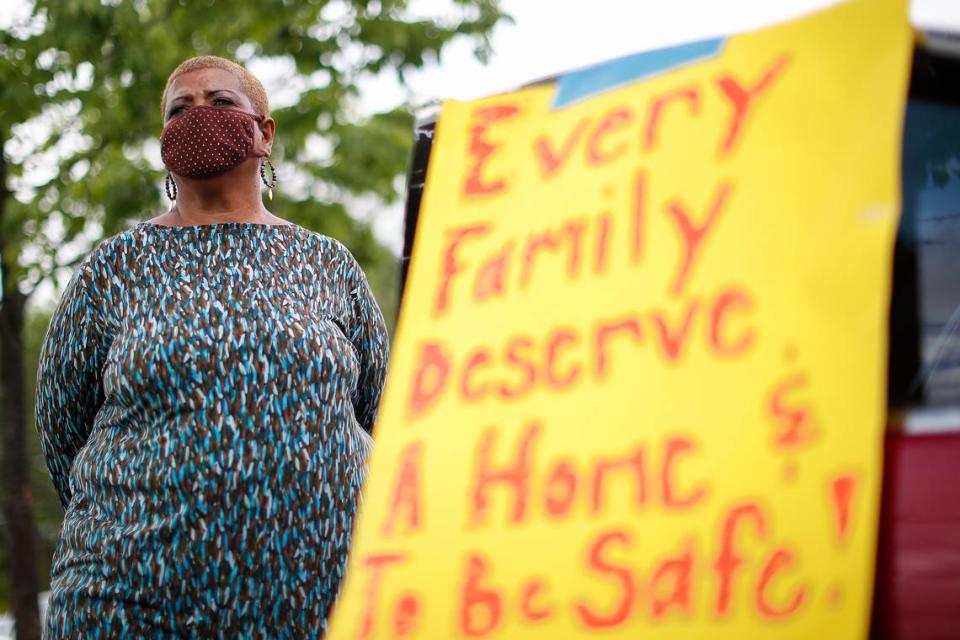After pandemic year of tough choices, Lexington budget plan seeks new investments.
Lexington Mayor Linda Gorton unveiled a $398 million spending plan Tuesday that includes 30 new positions, $4.8 million in parks improvements, increases investment in affordable housing and includes raises for most city employees.
“It’s a bold plan for our future and it makes solid investments in basic needs,” Gorton said Tuesday. “Because we were careful to live within our means and because we made really tough budget decisions last year, we now find ourselves in a much better financial position than many other cities.”
The $398 million spending plan is a 5 percent increase over the current-year, bare-bones budget of $379 million. It does not include any tax increases. The proposed budget is for the fiscal year that begins July 1.
Thanks in large part to federal stimulus dollars awarded to the city last year and better-than-expected tax collections — particularly in employee withholding or a tax on jobs— the city’s finances were able to rebound in the last six months of the current fiscal year.
That means the city, which has been on a spending diet during the coronavirus pandemic, now has money to invest in key areas, Gorton said.
“In putting together this budget, we set the bar high,” Gorton said. “Our goal is to build a bright future for all of our citizens — a rising tide that lifts all boats.”
City to hire more police officers, give 3 percent raise to employees
The city froze dozens of positions last year to slash expenses. Gorton’s budget proposes adding 30 positions, 11 of which were frozen last year; 19 positions are new.
Some of those new positions include five neighborhood resource police officers and a sergeant to oversee them. Neighborhood resource officers act as a liaison with neighborhoods and help build trust. Not every neighborhood has one and members of the Lexington-Fayette Urban County Council have pushed to augment the popular program.
“When I talked to council members about their budget requests, this is one of the items that nearly all were in agreement that they wanted,” Gorton said.

Also included in the 30 new positions is four safety officers, who help police with traffic accidents and other duties.
In addition, the city will spend approximately $3.1 million to give city employees not covered by collective bargaining agreements a 3 percent raise.
“The last time city employees had a raise was in 2018,” Gorton said. “The city has been able to continue providing excellent services, in part, because of their ability to handle all kinds of changes, throughout the pandemic.”
Affordable housing, nonprofits get bump in funding
Gorton’s proposed budget also includes an additional $1 million for the city’s affordable housing program. It traditionally receives $2 million a year. Gorton’s budget proposal includes $3 million.
“Since 2014 we have invested $17.2 million to leverage $196 million in construction or rehabilitation of 2,008 affordable apartments or houses. That is a significant accomplishment,” Gorton said. “Still, every study shows we need to do more.”
There will be $3.6 million for extended social resource grants, a competitive grant program for nonprofits.

Due to plummeting revenues caused by the coronavirus pandemic, Gorton’s original budget proposal for the current year cut all extended social resource grants and affordable housing. After an outcry , the Lexington council restored funding to those programs — $1.8 million for affordable housing and $2.1 million for extended social resource grants.
In response to racial justice protests last summer, Gorton appointed a Racial Justice and Equality Commission to address racial inequalities in government, policing, housing and education. The commission released more than 54 recommendations in October.
One of the recommendations was to create a division within government concentrated on housing. Gorton’s budget proposal includes money for the creation of the new housing department, which will require additional staff, and will set aside $200,000 for a new program that will help poor home owners fix problems cited by code enforcement.
“Code enforcement will have an opportunity to help income-eligible property owners who can’t afford to make repairs,” Gorton said.
In addition, the budget will fund the creation of a new staffer, to be housed in the mayor’s office, who will oversee implementation of the Racial Justice and Equality Commission’s recommendations, Gorton said.
More money for parks, paving
The budget also includes:
$14 million in paving including $1 million for paving of Man O War Boulevard between Grassy Creek towards Versailles Road
$4.8 million in parks improvements including playground upgrades at Gardenside, Masterson, Pine Meadows, Northeastern; improvements to basketball courts at Dogwood and Berry Hill parks, and a new slide at Douglass Pool
$2 million for new vehicles, including new dump trucks
$1.8 million for a new fire engine, two new ambulances and updating and modifying two additional ambulances
$500,000 for the Jobs Fund, a local incentive program to attract high-paying jobs to Lexington
$300,000 for economic development partners to help attract and retain businesses
$200,000 for workforce development training programs
$2.3 million to replace police cruisers, vehicles and $750,000 for a new mobile command unit
$2 million for the Purchase of Development Rights program, which buys development rights for farmland
$60,000 for a program to keep people in sober living and recovery homes
The budget will now to go to the council to make changes. The council has until June 30 to pass a budget.
“I’m very pleased with infrastructure improvements. That $4.8 million for parks will go to every district in our city. That’s critical,” Councilwoman Amanda Bledose, who chairs the Budget, Finance and Economic Development Committee.
The $14 million in paving is a dramatic increase from the prior years, Bledsoe said. Due to plummeting revenues, the city has not been able to fully fund paving, particularly neighborhood streets, in recent years. That bump in paving money will help the city catch up on much-needed road improvements, Bledsoe said.
“I am surprised that economic development was not higher,” Bledsoe said. The $300,000 to partner agencies for job retention and growth is the same as it was in the current-year budget.
But Bledsoe said the council’s bigger question is how Gorton funded the $398 million budget.
City to receive $122 million in federal stimulus dollars, still waiting on rules
The $398 million comes from four main pots:
$376 million in projected tax revenue
$7.9 million from current-year savings
$3.9 million from a budget stabilization fund to offset pension cost increases
$10 million from federal money the city will receive from the American Rescue Act
Gorton said Tuesday the city is expected to receive $61 million this year from the American Rescue Act. However, the in-depth guidelines for how that money can be spent will not be released until May.
“We only used a small portion of the federal stimulus money in the budget on items we were sure would qualify,” Gorton said. The city and the council will have to come up with a separate plan on how to spend the remaining $51 million expected this fiscal year. The city is to receive a second allocation of $61 million next year for a total of $122 million.
The money has to be spent by 2024, which means the city has to move quickly.
Bledsoe said the council will likely have to decide if it wants to use the $10 million from the American Rescue Act to fund the projects Gorton outlined in the budget, including $4.8 million in parks improvements. The current rules say those federal dollars can be spent on tourism-related items, which is how those parks projects qualified for that money.
“I think the biggest question is not what is in the budget but how structure it,” Bledsoe said. “We need to look at the budget separately from the American Rescue Plan money”
Bledsoe said the one-time money should be used for transformational projects that can benefit the entire community.
“How do we use this money to change the trajectory and create long-term substantial growth opportunities for our city,” Bledsoe said.
The city did not have to raid its rainy day fund to balance the current-year budget as originally expected.
That means there is currently $42.5 million in the city’s main rainy day account, which exceeds the goal of 10 percent of the city’s budget. The city typically socks away $50,000 per month in that account. Gorton said since the city has surpassed the 10 percent goal, her budget proposal suspends that $50,000 per month allocation.

 Yahoo Movies
Yahoo Movies 
